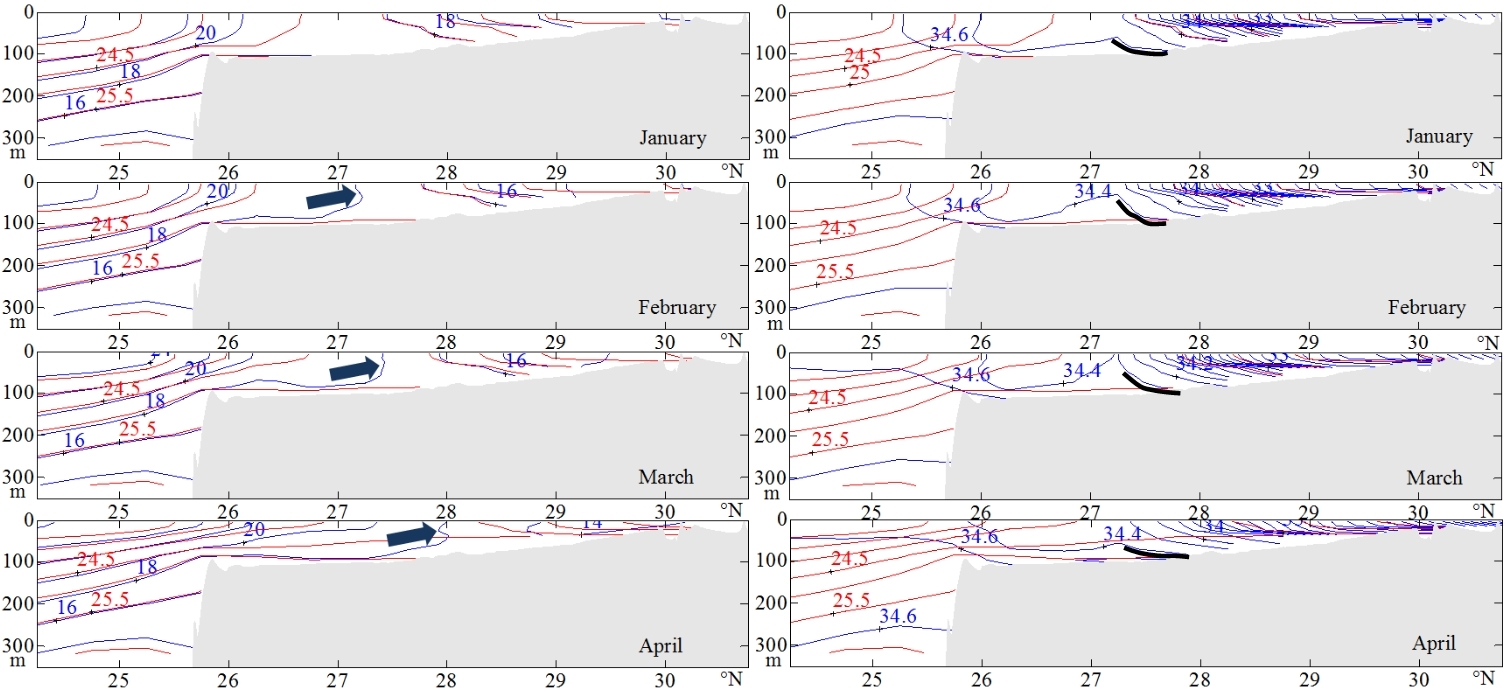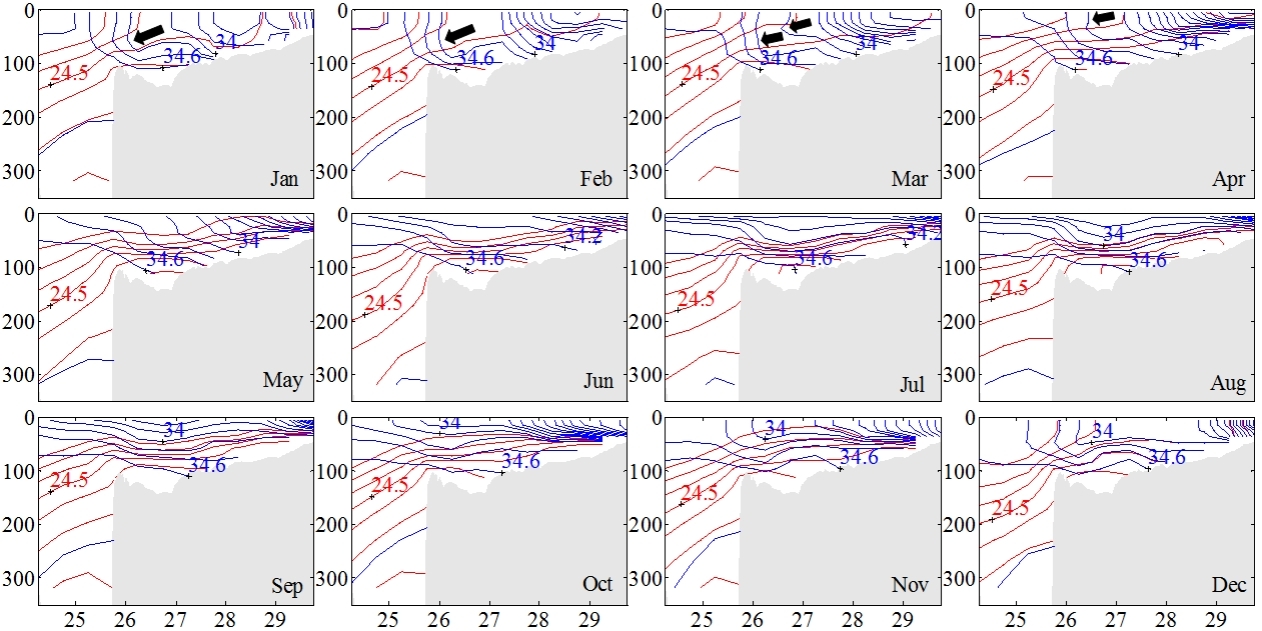Subsurface exchange of the Kuroshio Current and continental shelf water may be important to salt and nutrient budgets on the East China Sea (ECS) shelf, and of significance to ecological safety in the coastal and offshore ocean of China.
There are lots of researches focusing on the Kuroshio's intrusion, however, the two-way intrusions between Kuroshio and shelf water are poorly studied.
Recently, the research team led by Prof. QI Peng from the Institute of Oceanology of the Chinese Academy of Sciences (IOCAS) conducted a neutral density solution of subsurface oceanography in the southern ECS and revealed the two-way intrusions between the Kuroshio and less-saline shelf water.
The study was published in Journal of Geophysical Research: Oceans.
The study presented a neutral density solution of subsurface salinity in southern ECS with Empirical Orthogonal Function (EOF) analysis of Simple Ocean Data Assimilation (SODA) reanalysis data (1958-2008).
"Why only choose salinity? Because salinity is the most important feature to distinguish the Kuroshio water from less-saline shelf water in the ECS. The Kuroshio's intrusion onto the shelf is almost the only factor leading to salinity increase in the shelf sea," said Prof. QI.
EOFs, including and excluding seasonal signals, were conducted on the isopycnal surface 24.5, which is the deepest of the Kuroshio subsurface that can outcrop to shelf sea surface during winter and early spring.
Results showed that annual cycles dominate the first two leading EOFs, representing inner-shelf oscillation (EOF-1) and outer-shelf oscillation (EOF-2). More interestingly, EOF-2 also showd significant interannual variability.
To this end, researchers removed the seasonal signal from the dataset and recalculated EOF. It was found that the interannual EOF-1 was of cross-shelf in spatial pattern, with significant interannual variability.
This suggests that seaward penetration of shelf water and shelfward intrusion of the Kuroshio that mainly occurs in winter and early spring are a pair of contradiction in the two-way intrusions, which are modulated by significant interannual variability.
"Isopycnals extending abnormally northward and outcropping in the winters and early springs of some years correspond to significant non-intrusions of the Kuroshio. This situation paves the way for subduction of overlying less-saline shelf water," said Prof. QI.

Fig. 1 Meridional sections of 51-yr(1958-2008)-mean neutral density (red), temperature (blue, left) and salinity (blue, right) along 122.75°E. Arrows pointing north show the 18°C isotherm advances northward along the isopycnal surface 25.0 from February to April (left panels).

Fig. 2 Meridional sections of the 5-yr(1998-2002)-mean neutral density (red) and salinity (blue). Arrows pointing south show the isohaline 34.2 psu retreats.
Qi, P., & Guo Y.-x. (2022). Interpretation of subsurface salinity EOFs on southern ECS shelf using SODA reanalysis: Large-Scale patterns and seasonal to interannual variations. Journal of Geophysical Research: Oceans, 127, e2020JC017038.
QI Peng
Institute of Oceanology
E-mail: pqi@qdio.ac.cn
(Editor: ZHANG Yiyi)
|
|

Address: 7 Nanhai Road, Qingdao, Shandong 266071, China
Tel: 86-532-82898902 Fax: 86-532-82898612 E-mail: iocas@qdio.ac.cn


